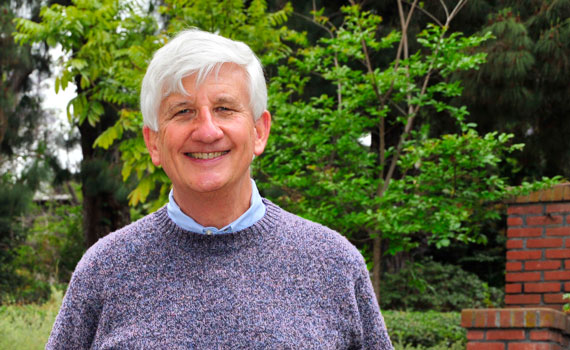|
SOHO President's Message
By David W. Goldberg
March/April 2023
 Photo by Sandé Lollis |
Like many SOHO members, I’ve long been intrigued by history and preservation. In my case this fascination dates to early childhood, well before the founding of SOHO in 1969.
Growing up, I didn’t know many people who shared this interest. Times were good and post-World War II optimism was in full swing with its focus on a bright future. For many, the “good old days” weren’t all that good, as memories of World War II and the Great Depression were still fresh. People wanted to look forward. What was a kid with an interest in the past to do?
Fortunately, my parents were understanding, and on weekends my mother would take me to quirky museums, antique shops, and junk stores. Although I didn’t realize it at the time, this was an education in its own right. It was an opportunity to see how people lived before I was born. I met people who didn’t necessarily believe that new ways of doing things were better than the old, or that conventional wisdom always made sense. It was enlightening. It helped me look at things in a more balanced light.
Much has changed since my childhood, especially the cost of housing. Growing up, it didn’t seem like a big problem. Supply was ample and prices reasonable. My third-grade teacher lived in Coronado because it was affordable. Del Mar was a convenient and cheap place for students attending UCSD to live. Today, the cost of housing is a hot-button issue with both the state and local governments trying to find solutions.
At the beginning of 2022, the highly controversial CA Senate Bill 9 (SB 9) went into effect with the goal of reducing the housing shortage by allowing homeowners to convert their homes into duplexes, or divide their lots in half to build another duplex, for a total of four units on the original lot. The legislation drew the ire of preservationists who fear that serious damage could be done to historic homes and neighborhoods, reversing decades of cultural, historical, and economic progress. Ultimately, we were able to have registered historic districts exempted from SB 9. Unregistered districts remain unprotected.
After being on California’s books for a little more than a year, has SB 9 made much of an impact? Not so far. Based on a study of 13 cities considered to be high-opportunity areas for duplexes, only 282 applications for SB 9 projects had been submitted to the municipalities by the end of November 2022, including seven in San Diego.
Converting a single-family home into a duplex, dividing a lot, and adding a second duplex is complicated. Construction and material costs are high, separate sewer and water lines may be needed, and financing can be difficult and expensive to obtain. This simply isn’t feasible for most homeowners. Unless the legislation is changed to allow non-homeowner investor speculation—a very real concern—it’s hard to see SB 9 gaining a lot of traction.
Moreover, there’s a better alternative: accessory dwelling units (ADU’s), which are growing in popularity. ADU’s are not without pitfalls, but they do offer definite advantages over SB 9 projects. Sometimes called “gentle density,” ADU’s can create housing that respects the look and feel of a neighborhood. It’s even possible for a dwelling with an ADU to be historically designated, as was the case with a 1931 Spanish Colonial Revival style house before the City of San Diego Historical Resources Board in January 2023. Properties with ADU’s may also be eligible for Mills Act tax benefits—something that’s probably not possible for a SB 9 project. (See the latest San Diego City and County Historical Designations report for details on the first local designation of a house with an ADU.)
The big concern with ADU’s is that some property owners may build units that are not in keeping with the historic character of the neighborhood. This can include designs that are too modern or too large, which can clash with the existing architecture and disrupt the area's overall historic sense of place. And, while ADU’s can provide valuable additional housing options in many communities, it is important to ensure that they are built and used in ways that respect the historic character and identity of San Diego's historic neighborhoods.
Another preservation option that deserves attention is adaptive reuse. Why, for example, don’t we convert the historic California Theatre downtown into low-cost housing, thereby helping replace Single Room Occupancy (SRO) units that have been lost to redevelopment in recent years? And, as working from home becomes more prevalent and online shopping the norm, doesn’t it make sense to convert underutilized shopping centers and office buildings into housing?
In short, new construction isn’t always the best approach. Learn from history…Part of the solution has already been built…Preservation tools work.
As the weather warms up, I look forward to seeing everyone as we enjoy our beautiful and historic city together.
|
2025
2024
2023
2022
2021
2020
2019
2018
2017
2016
2015
|




